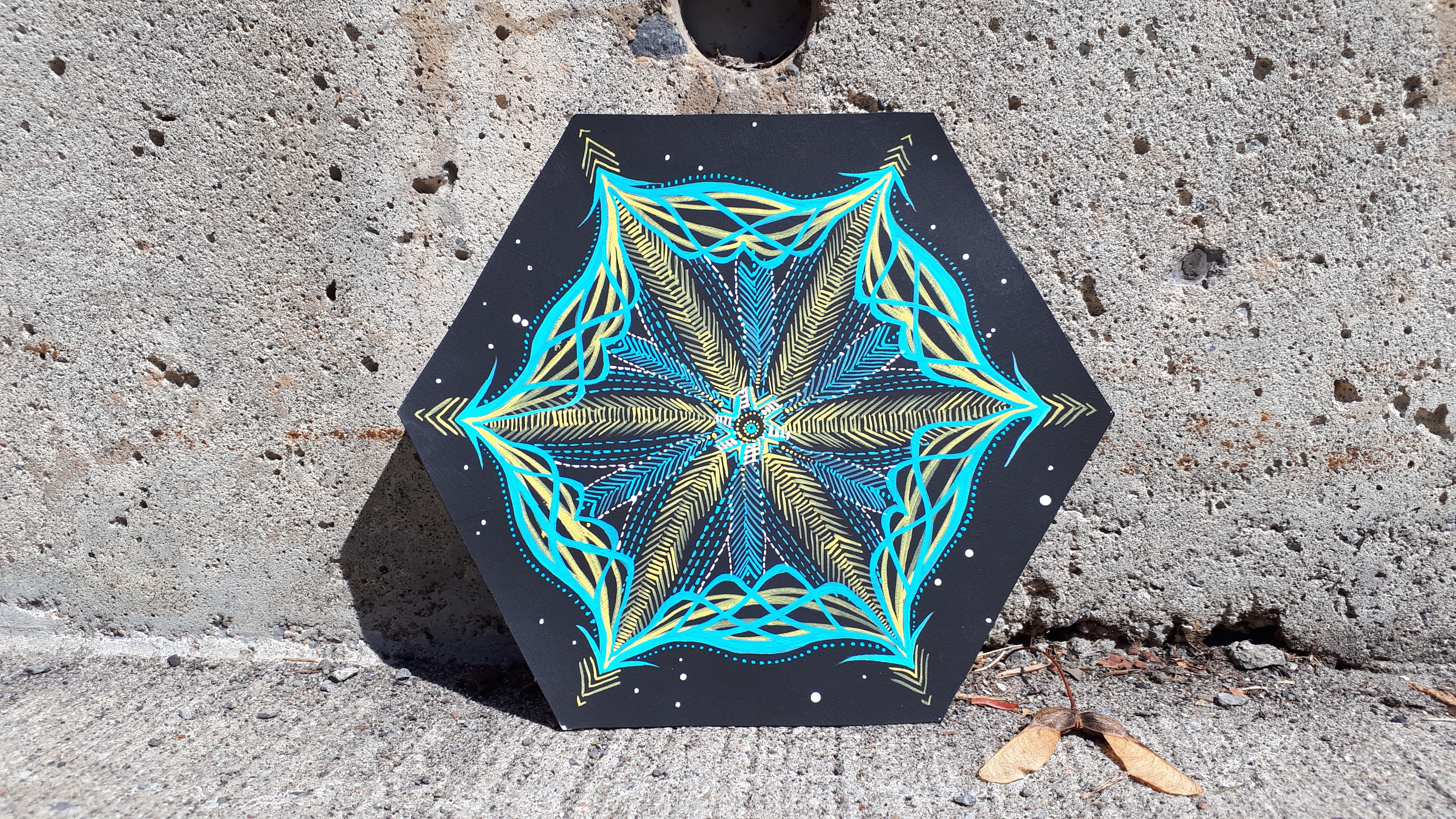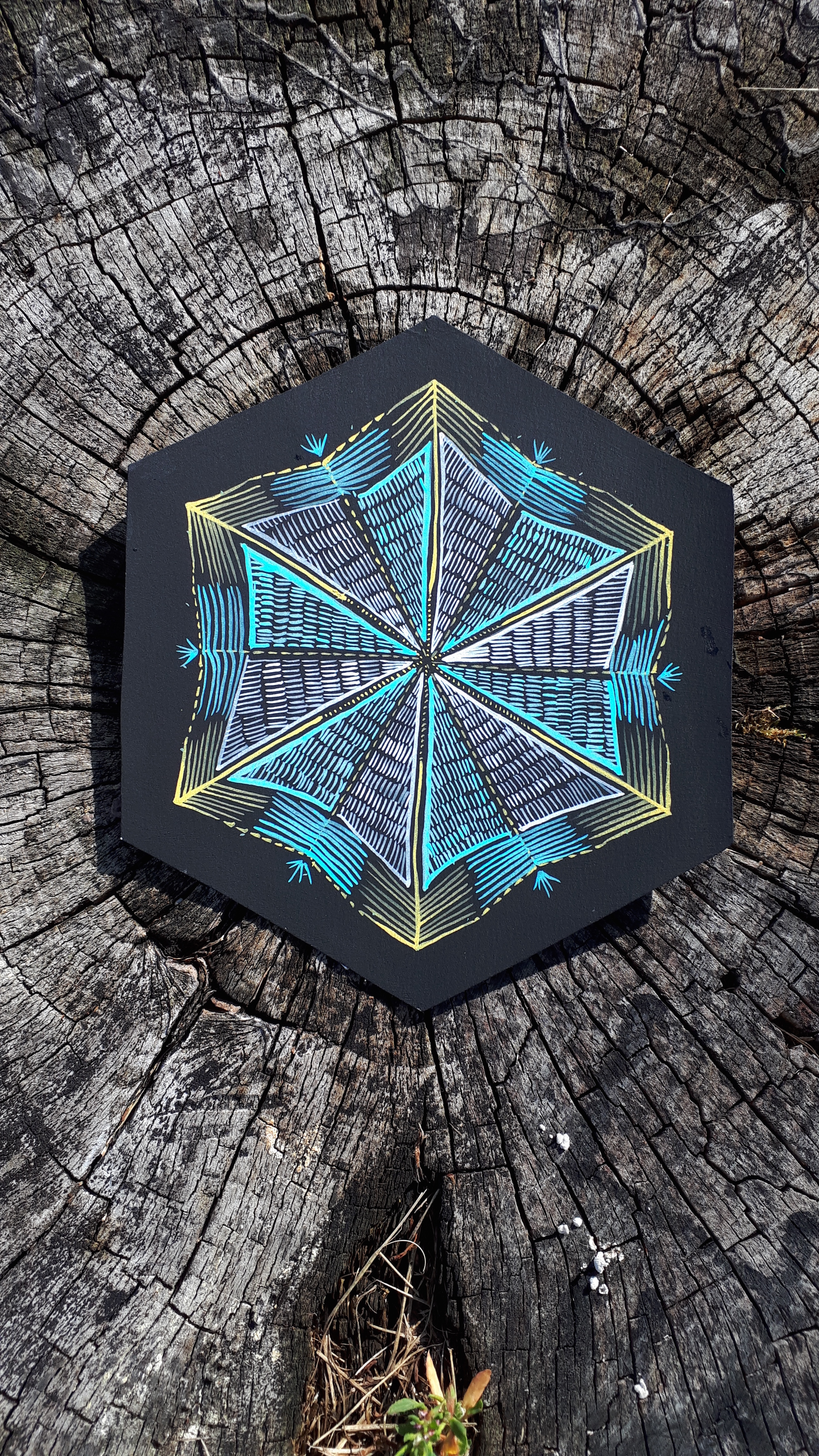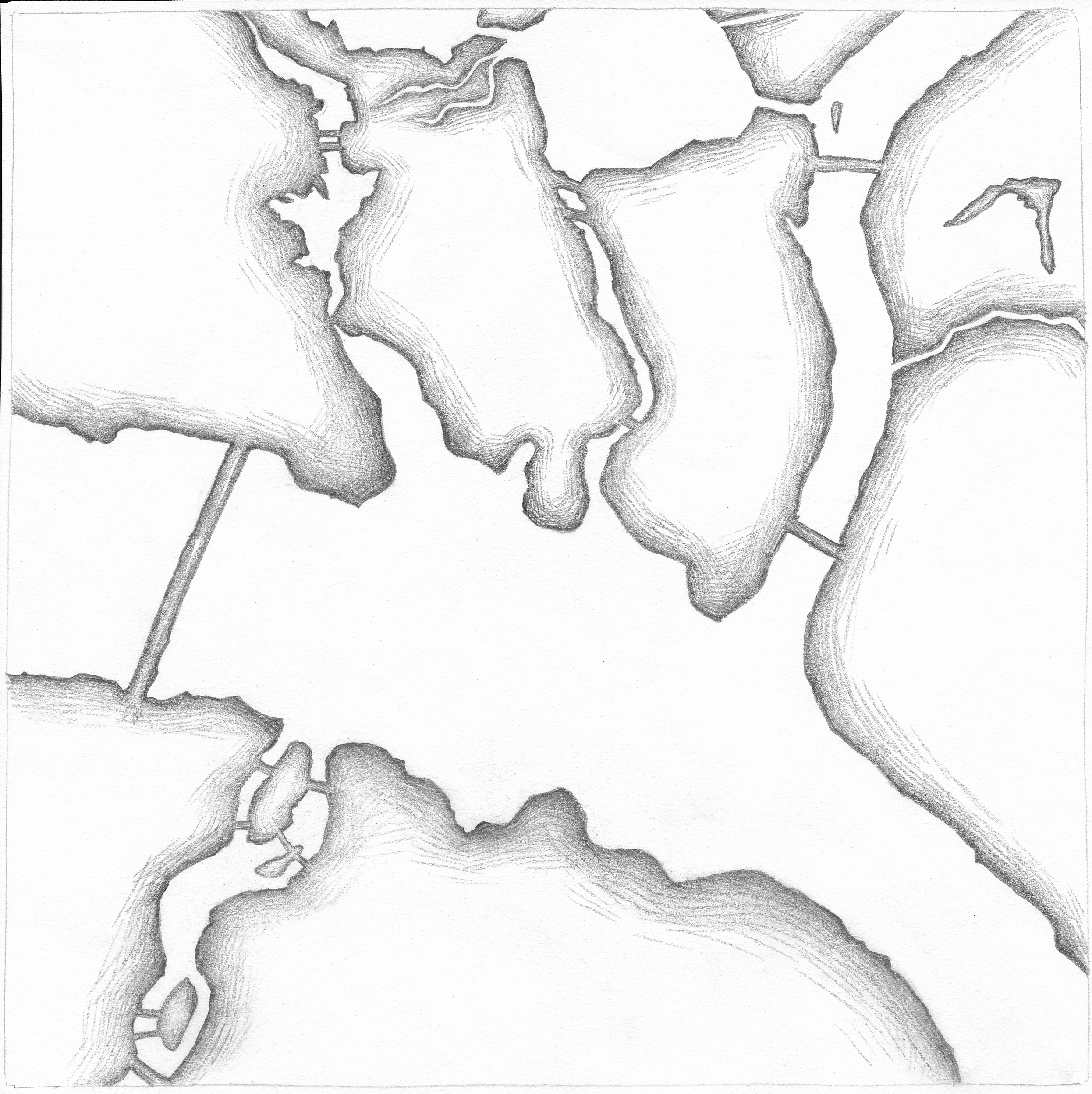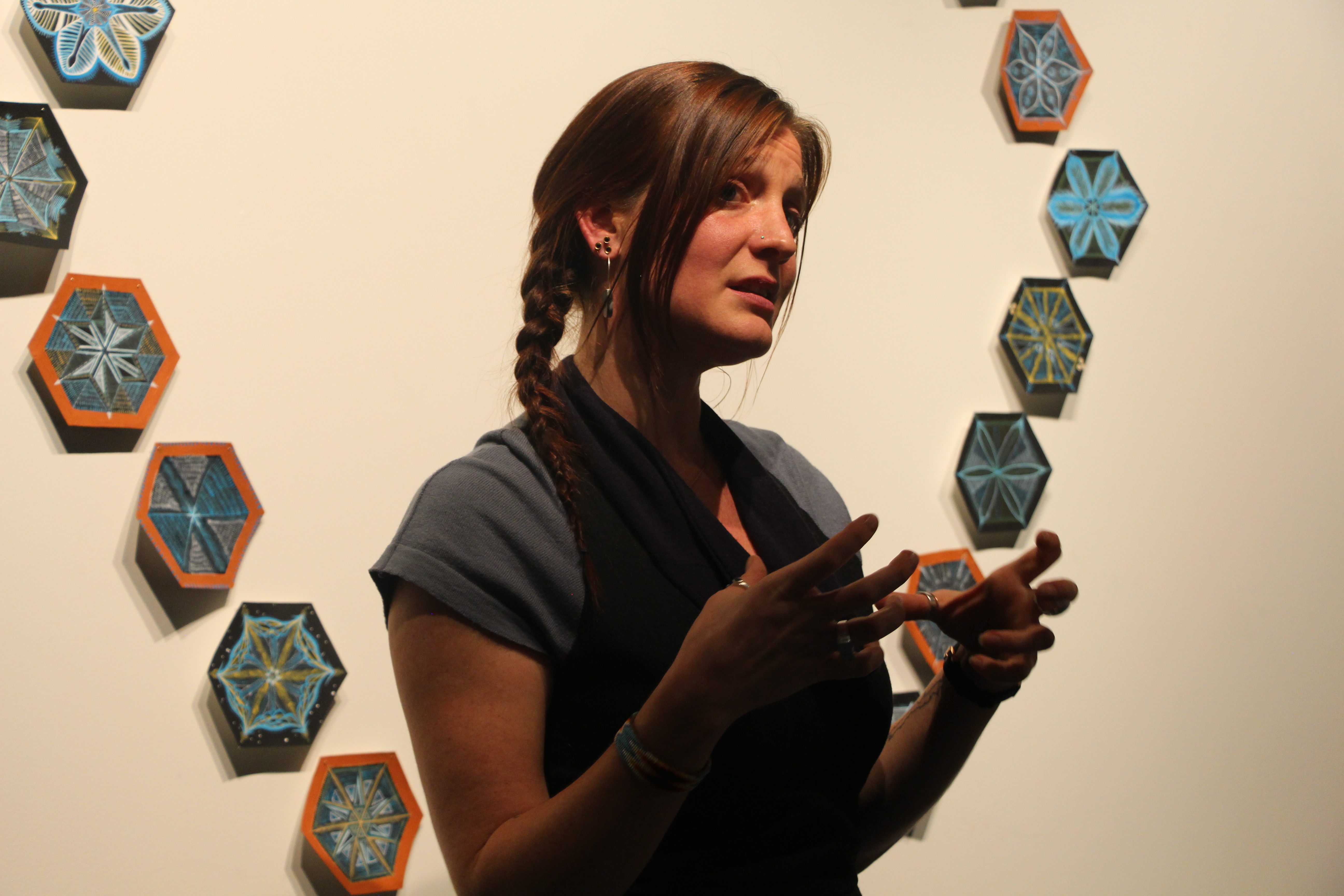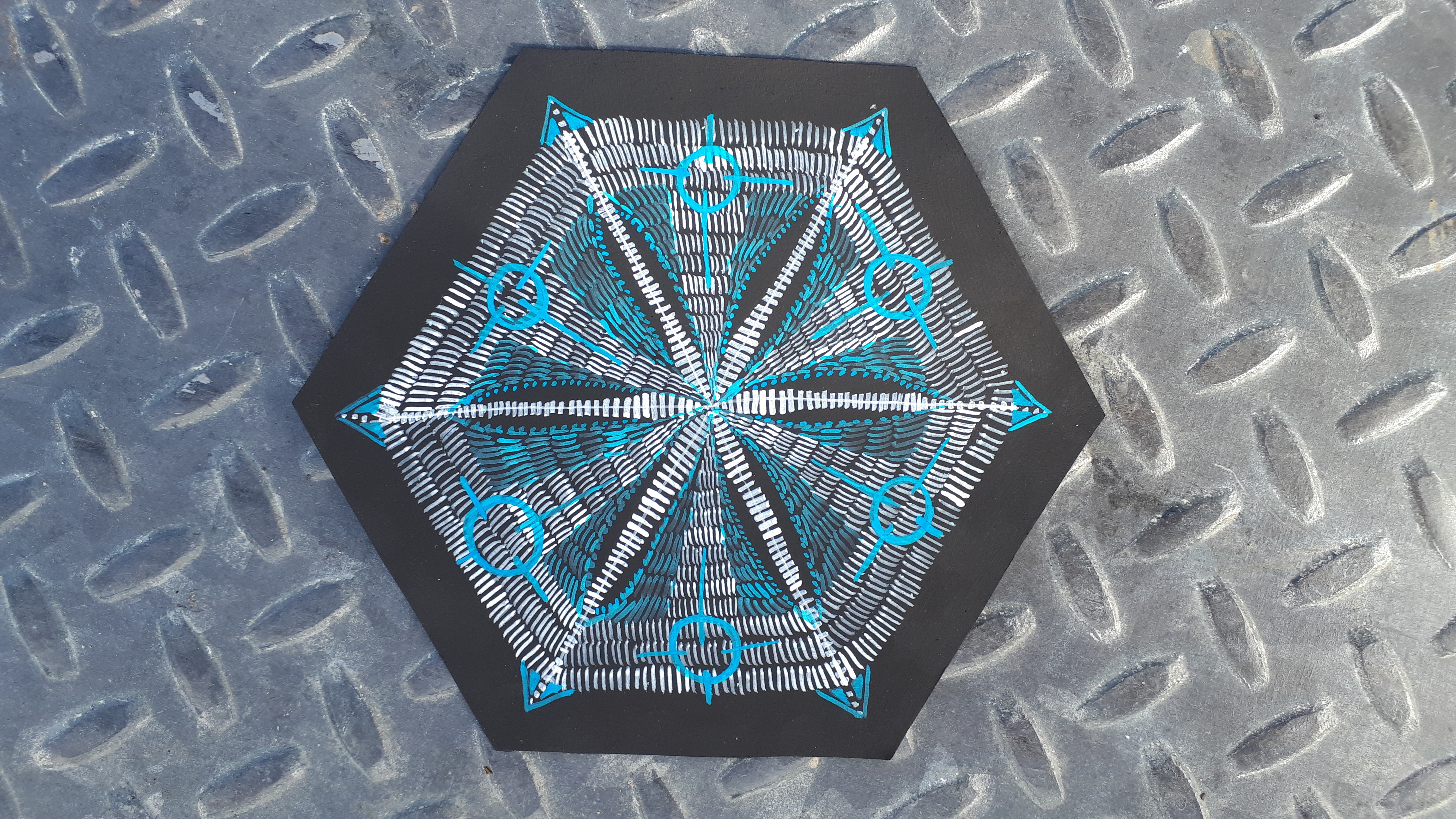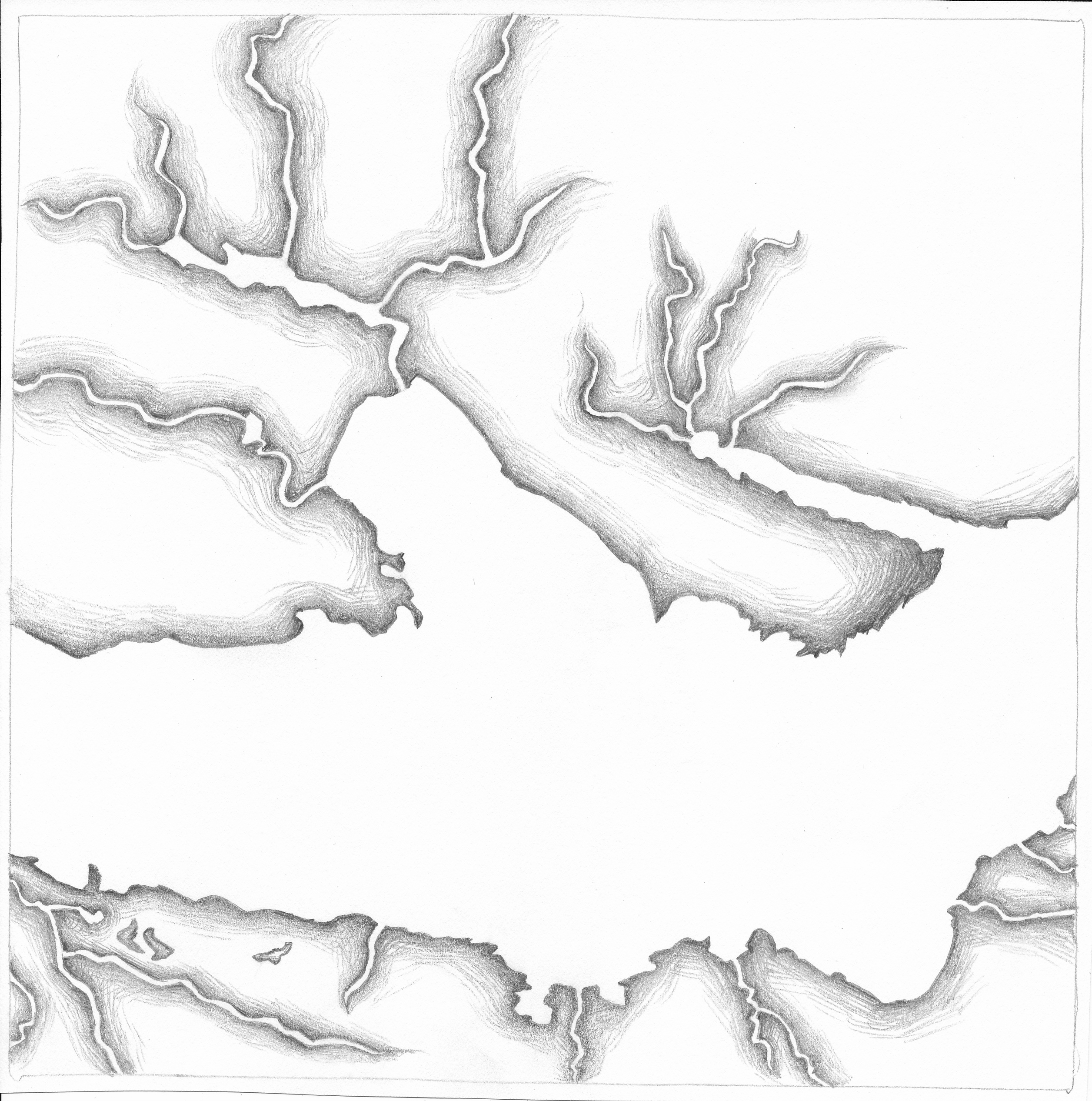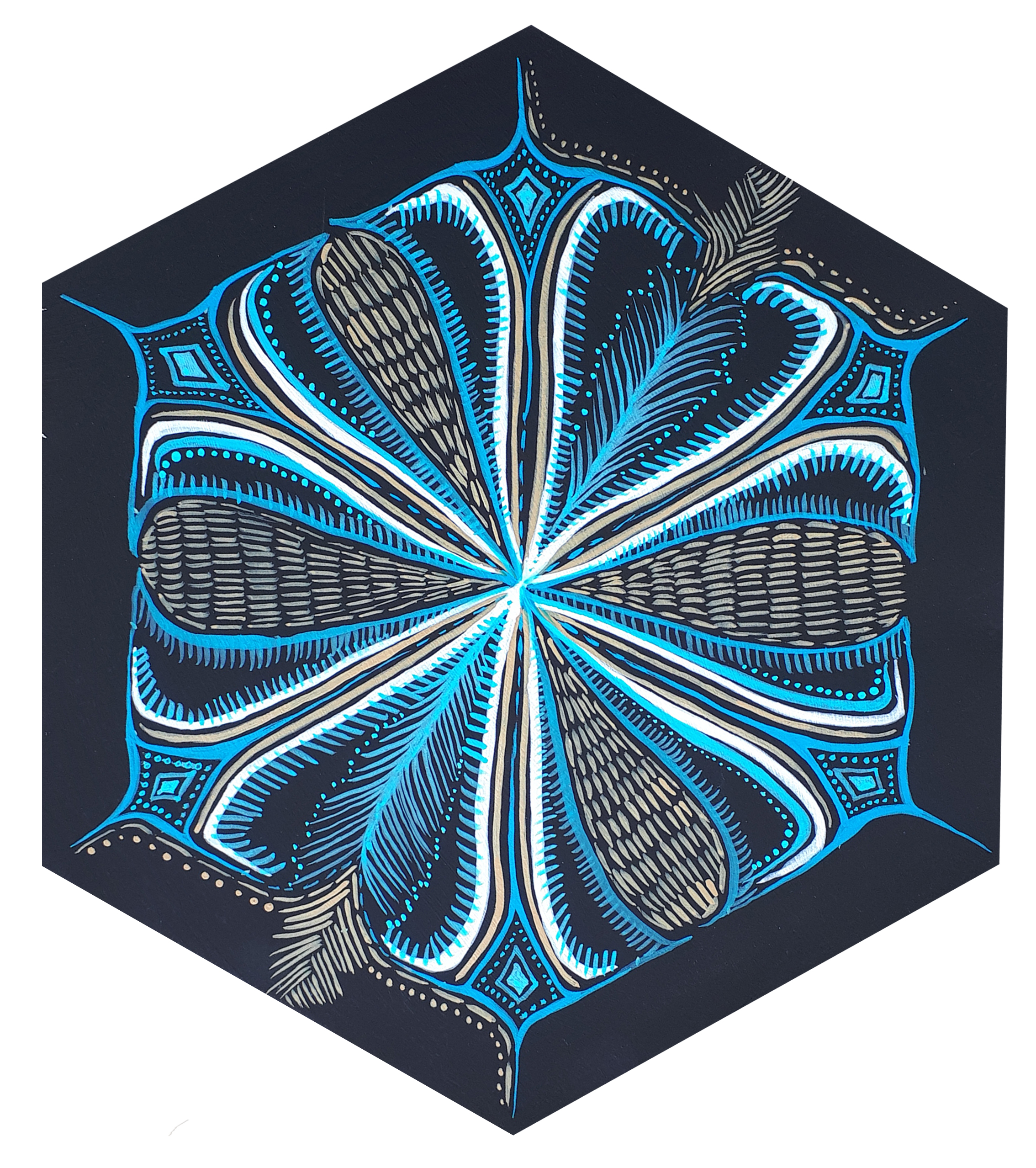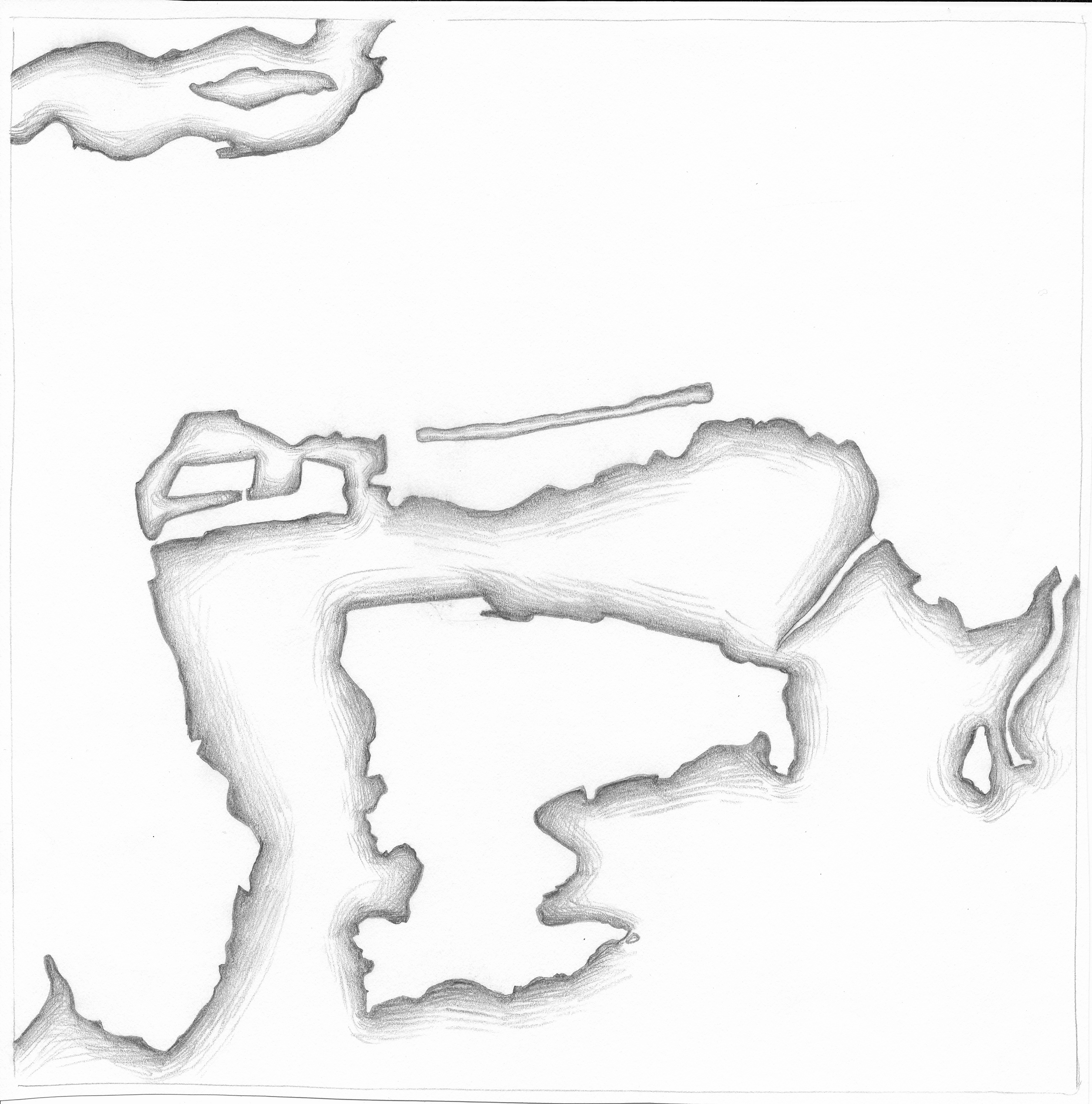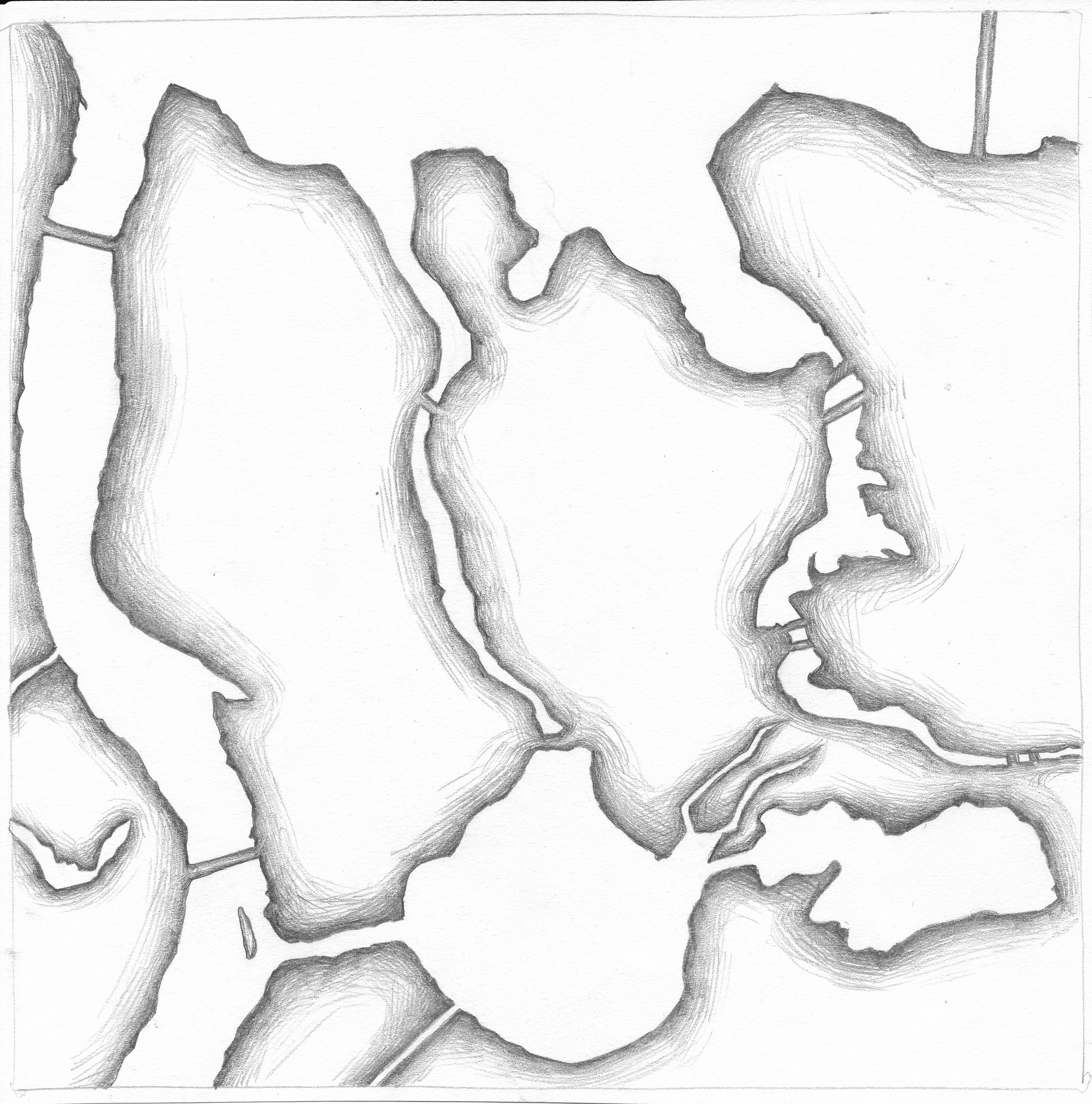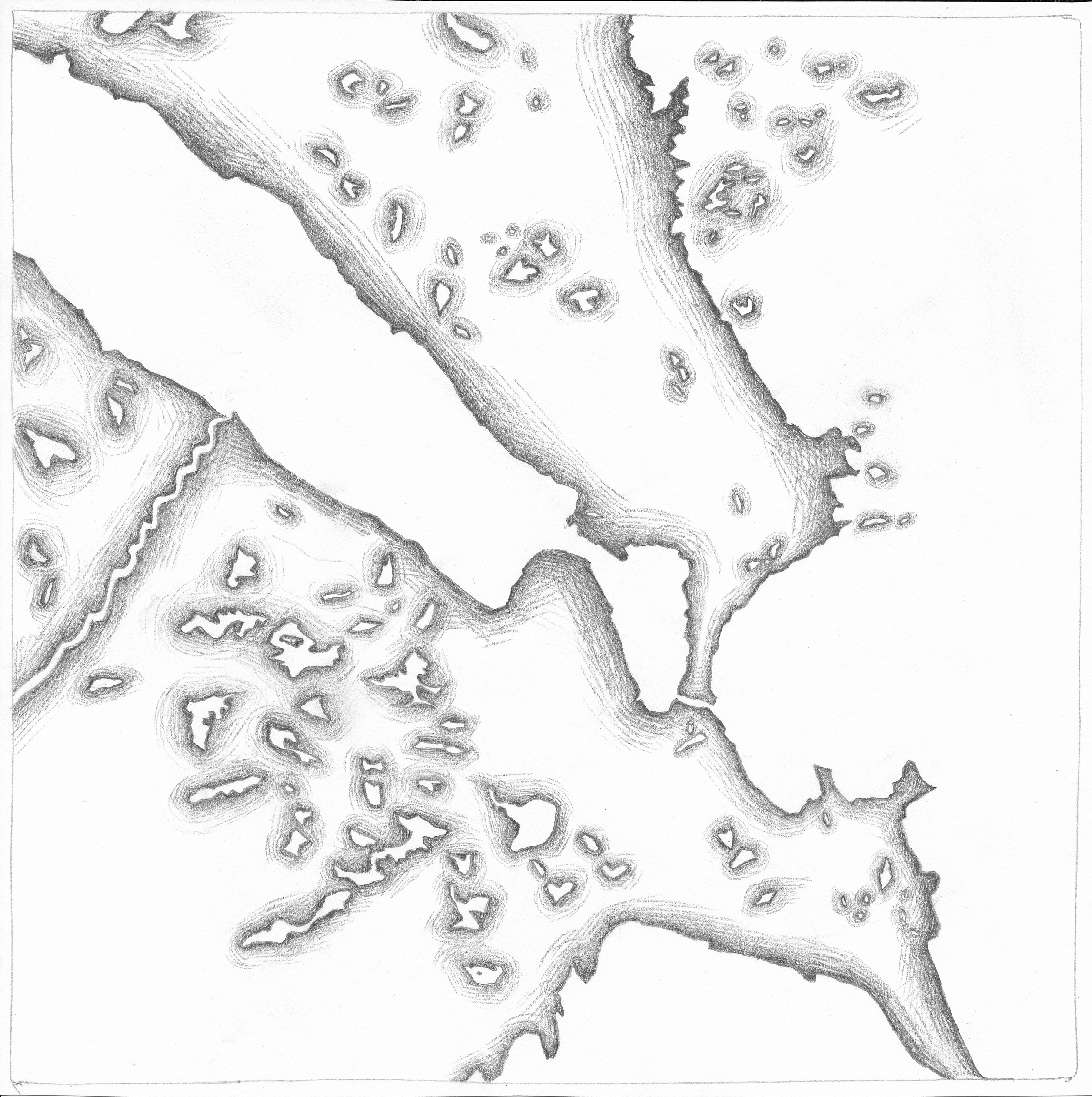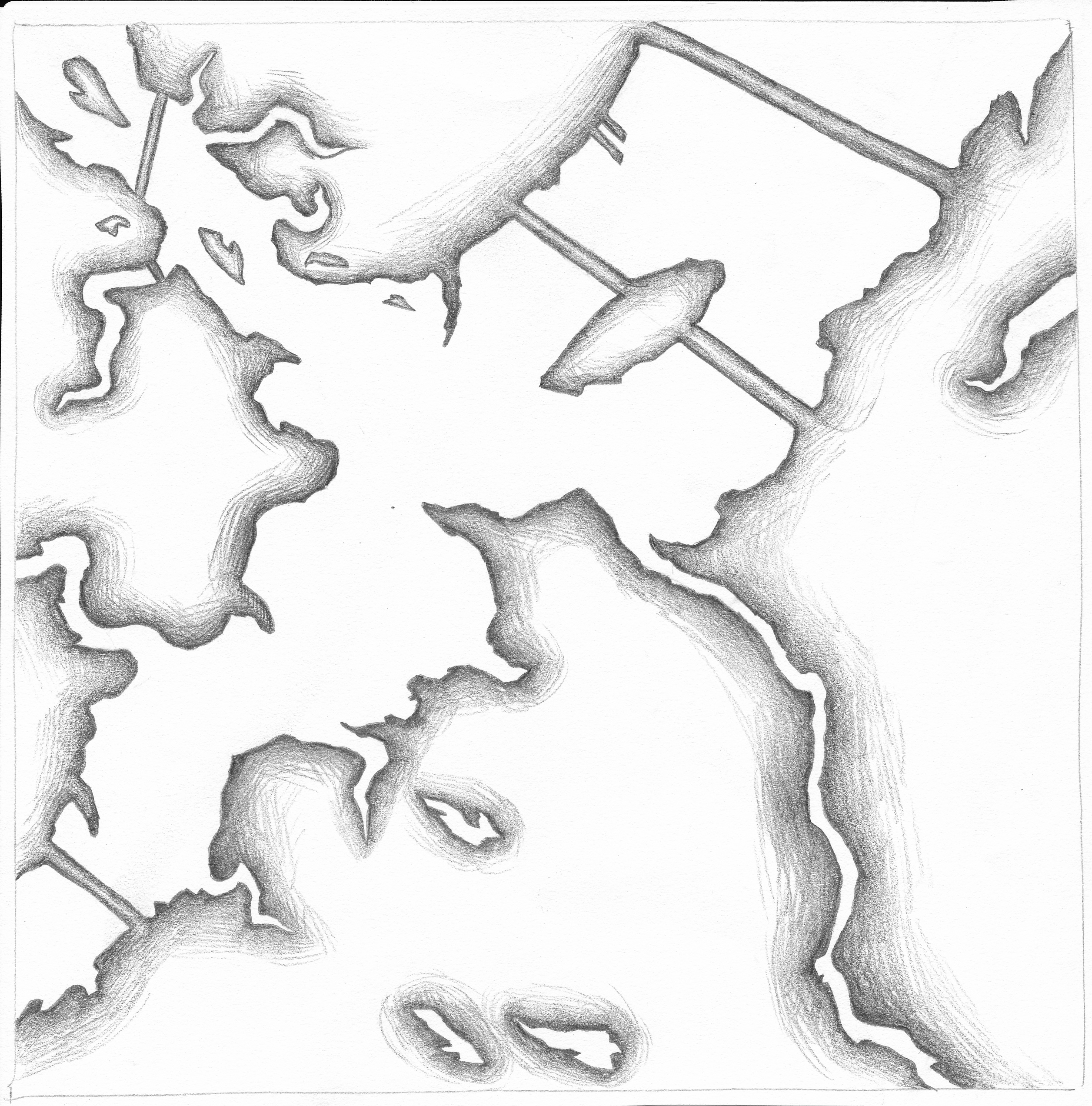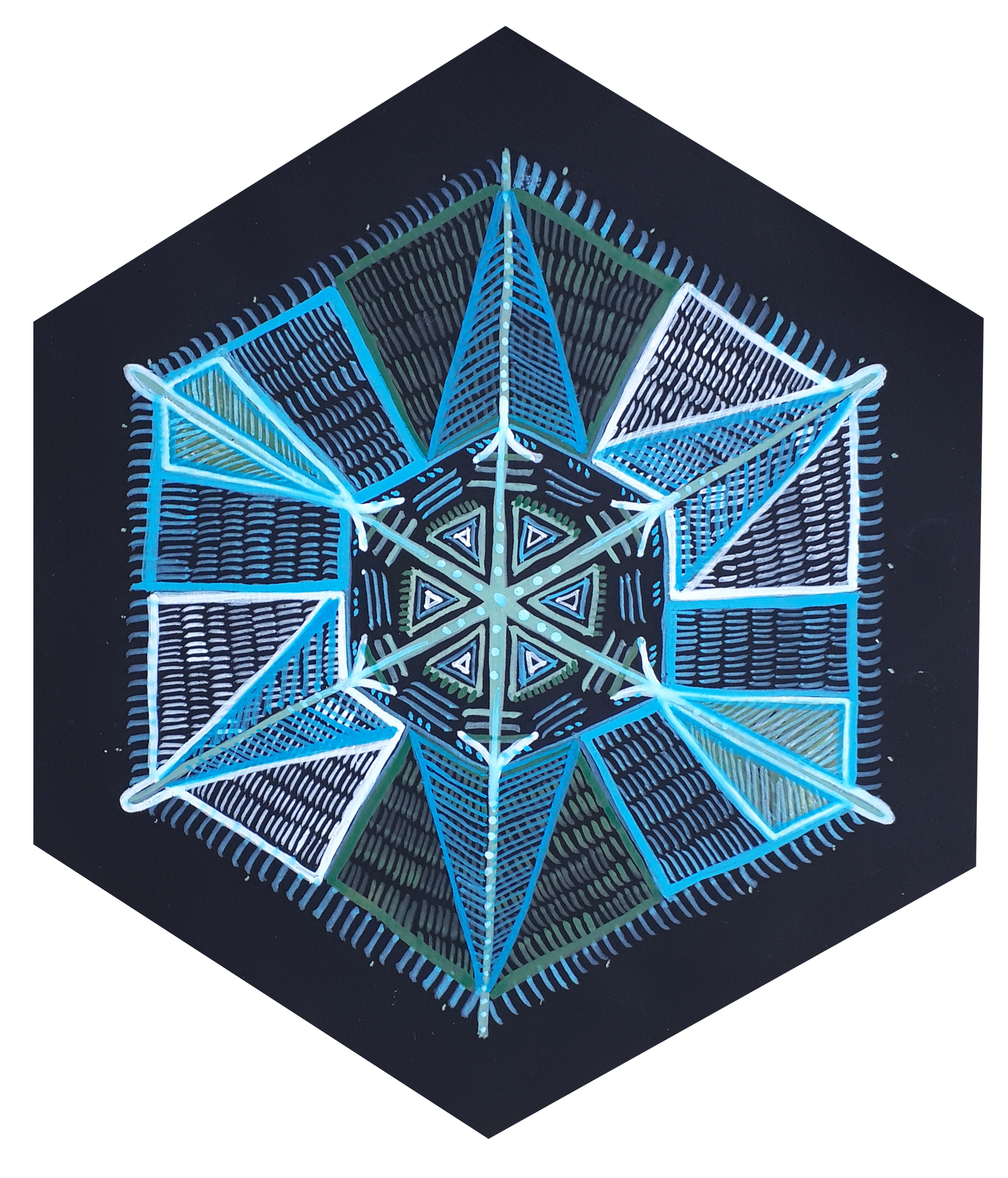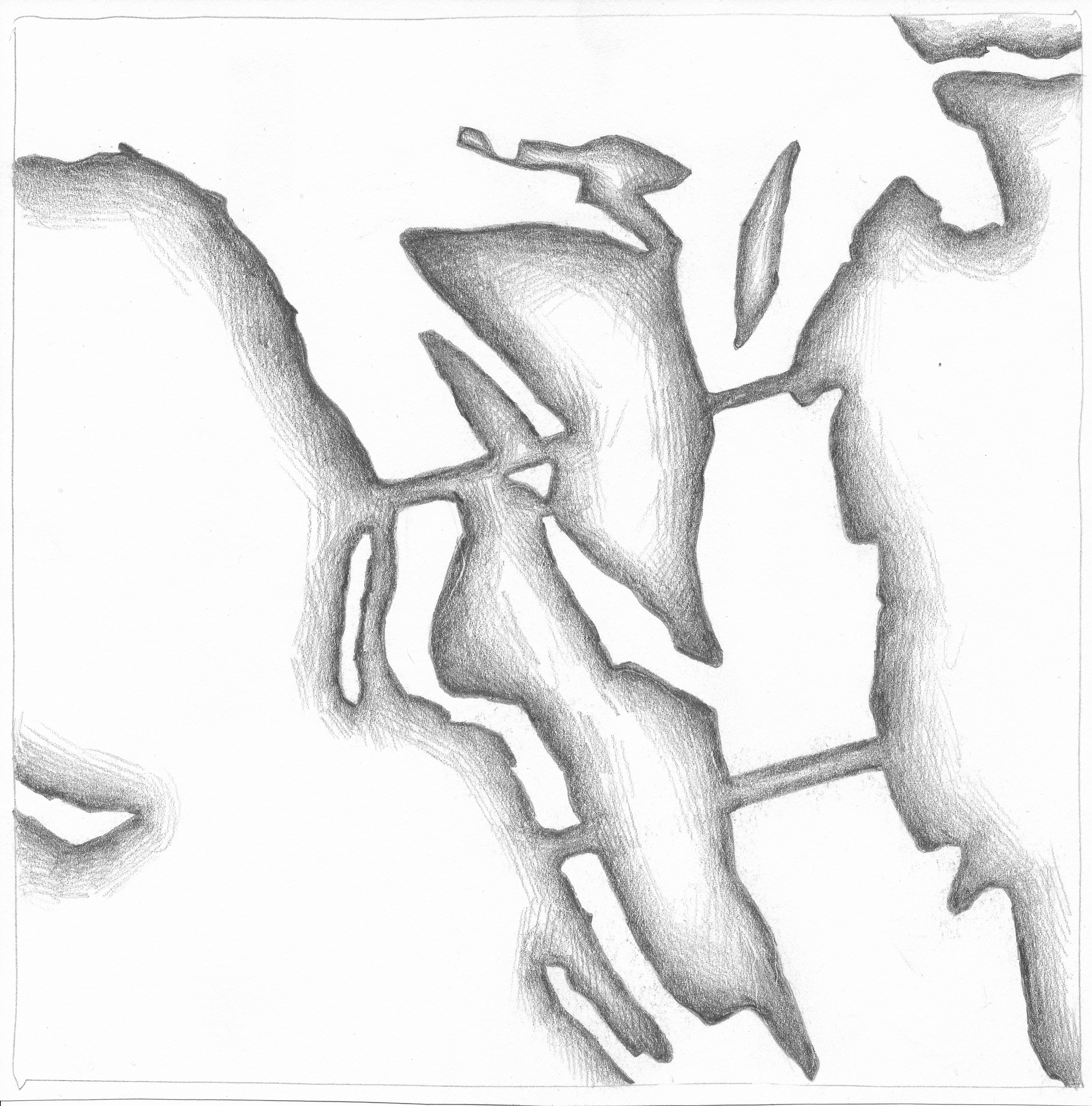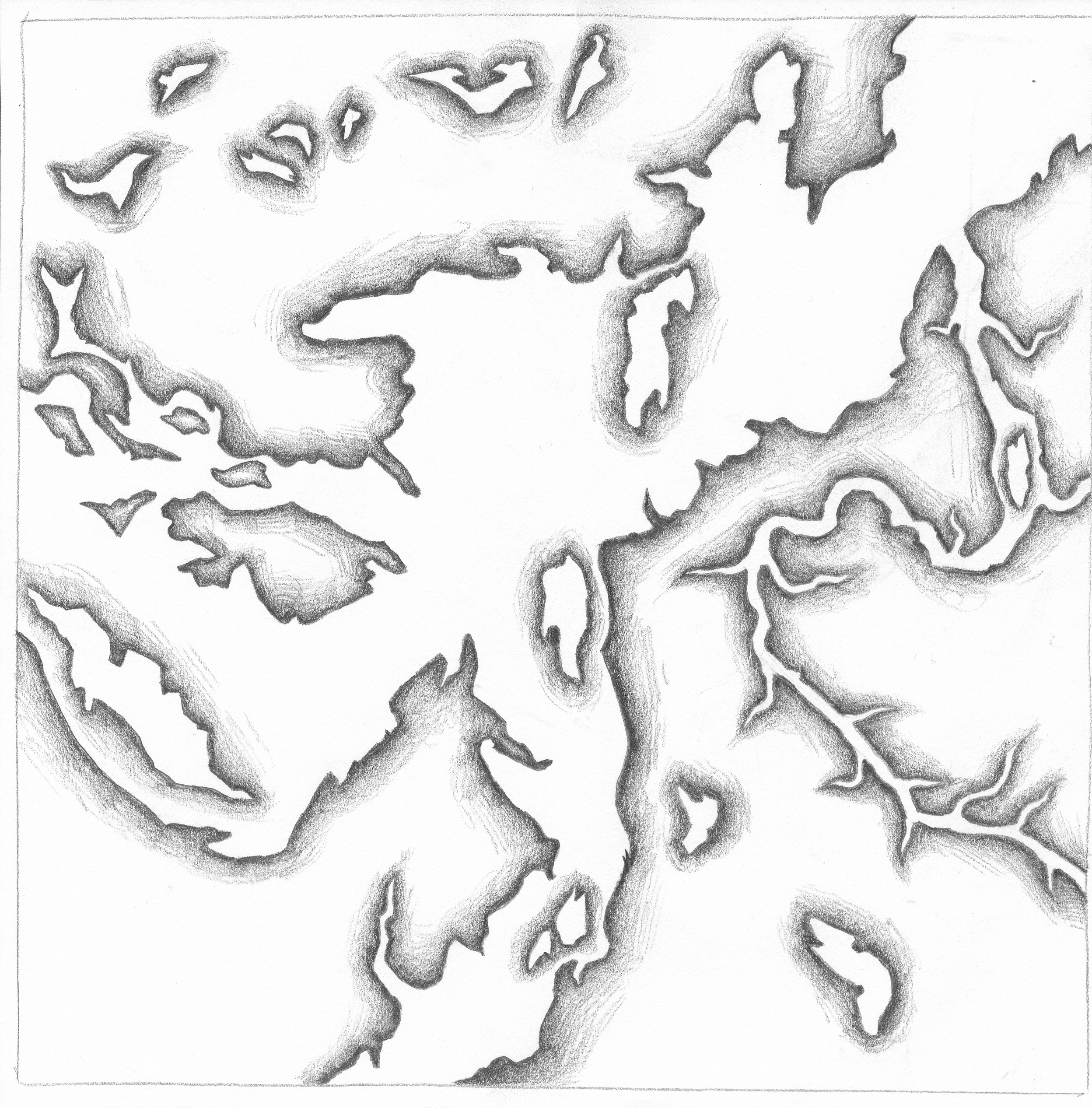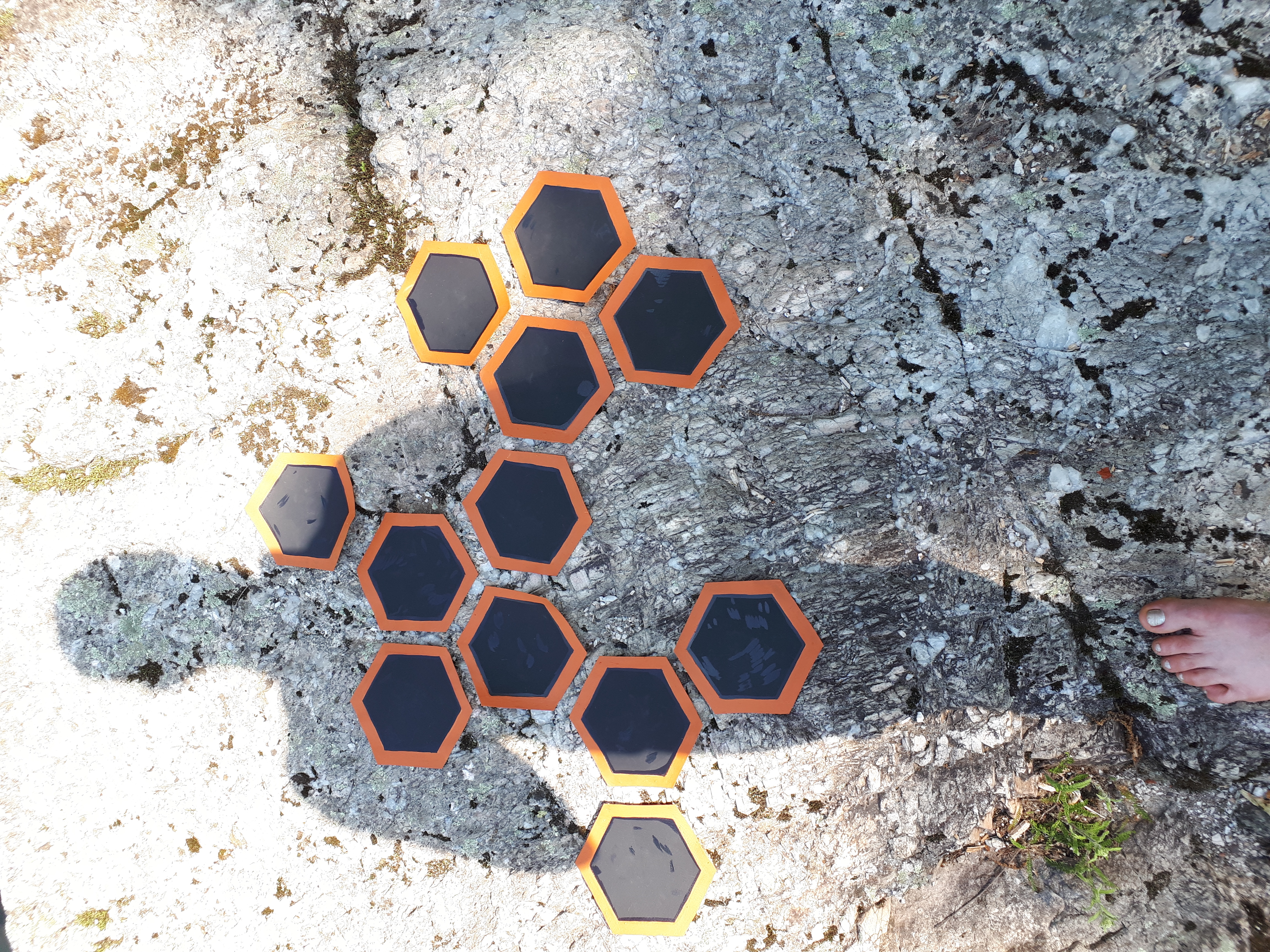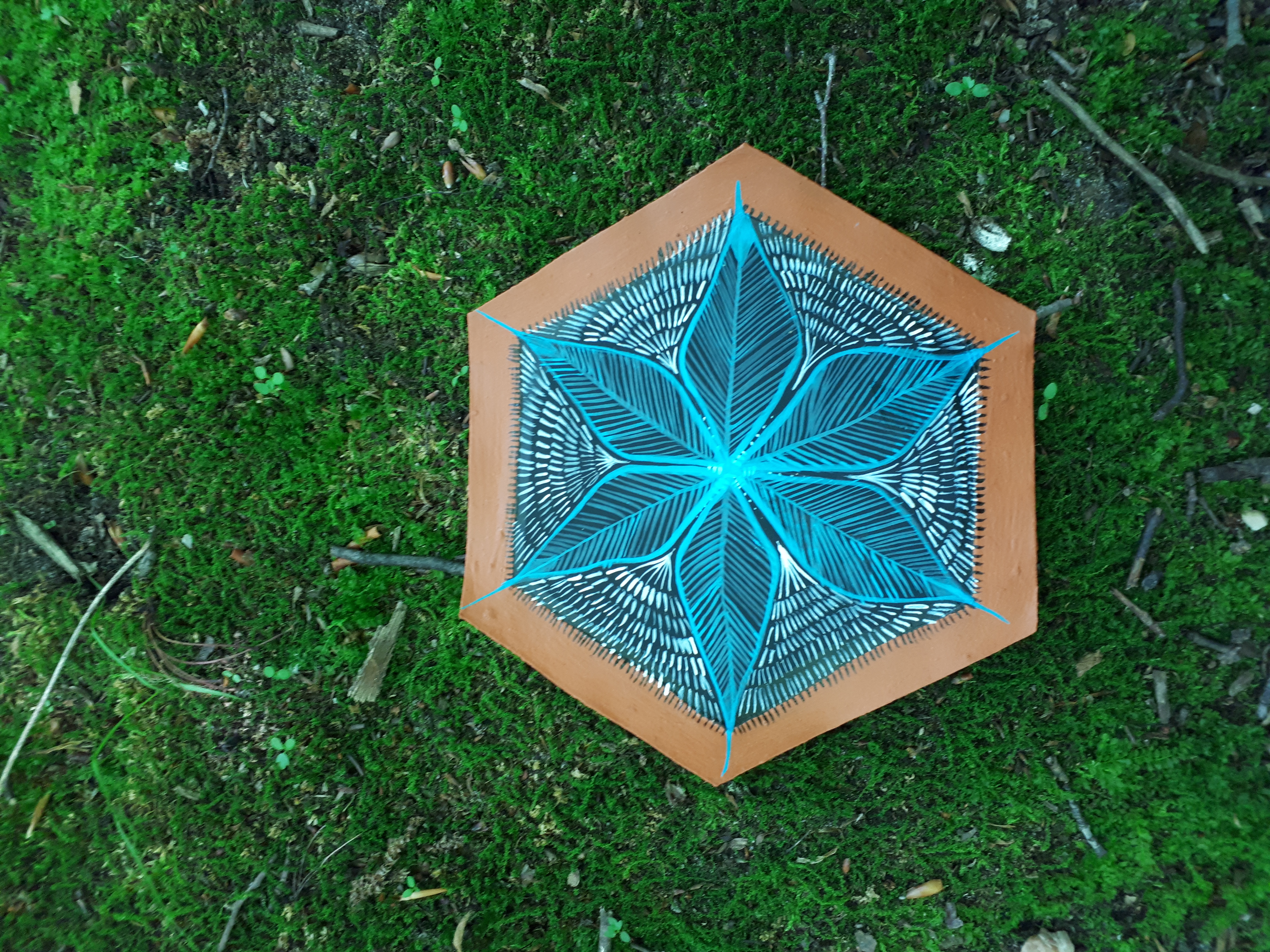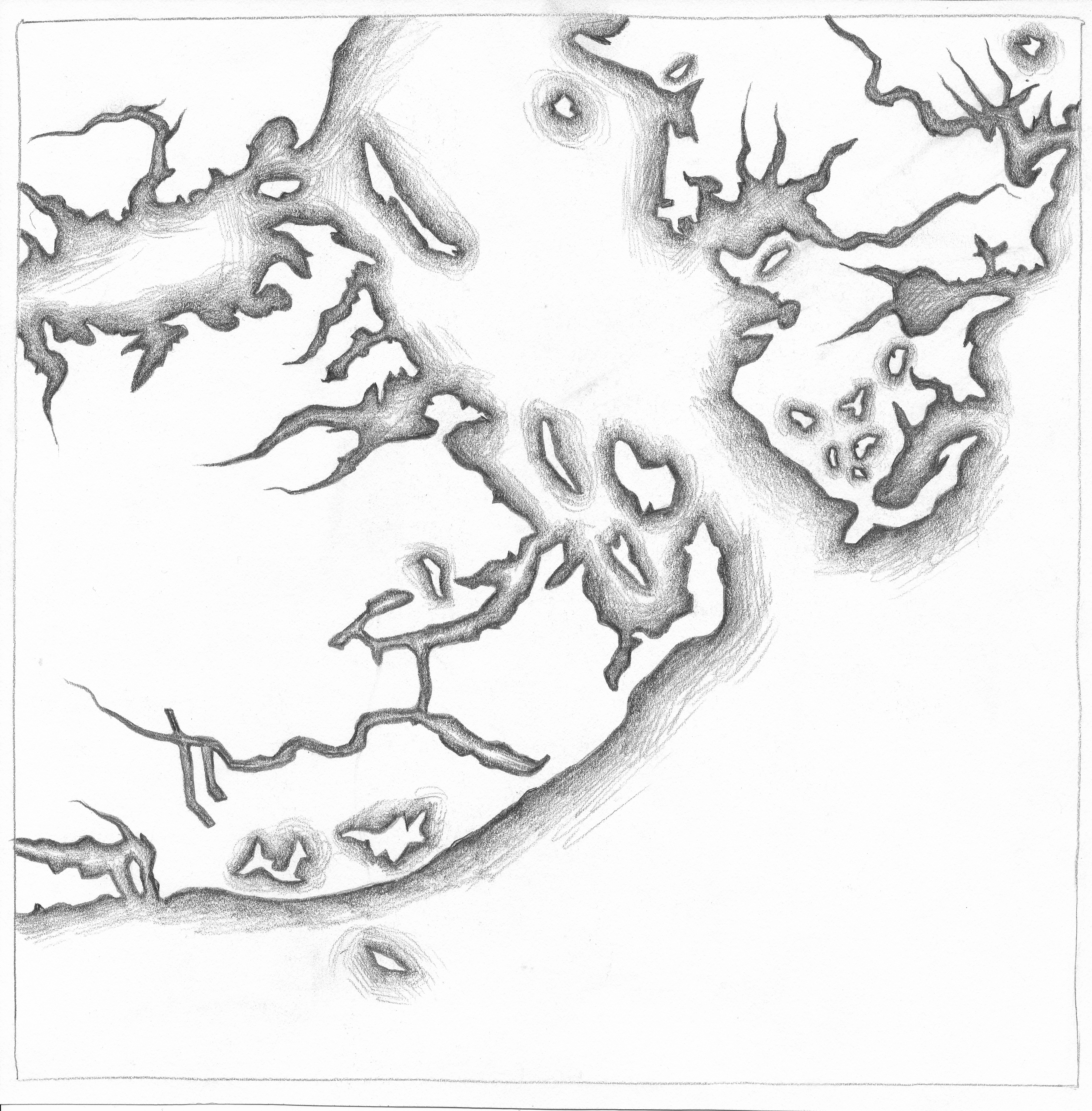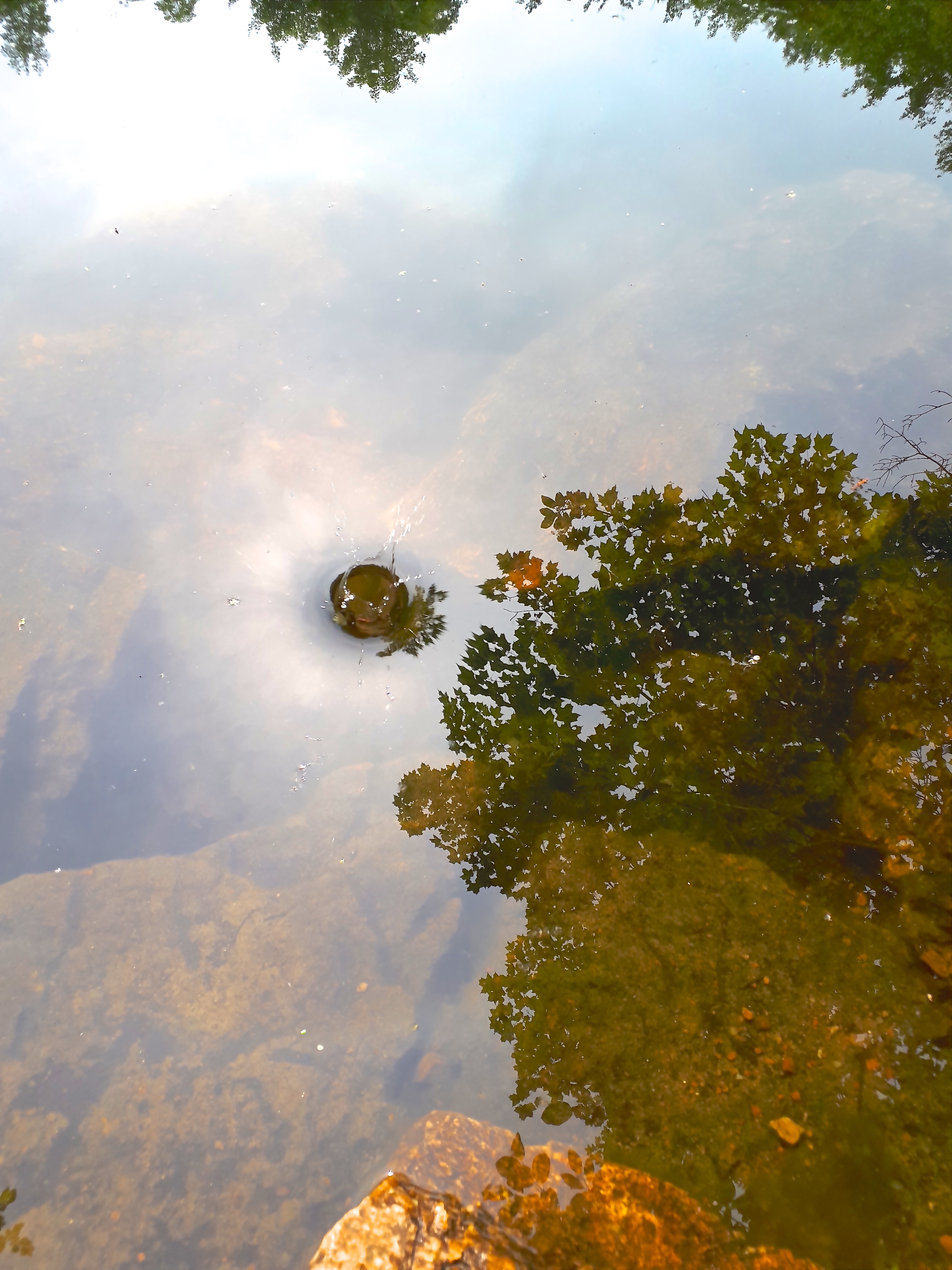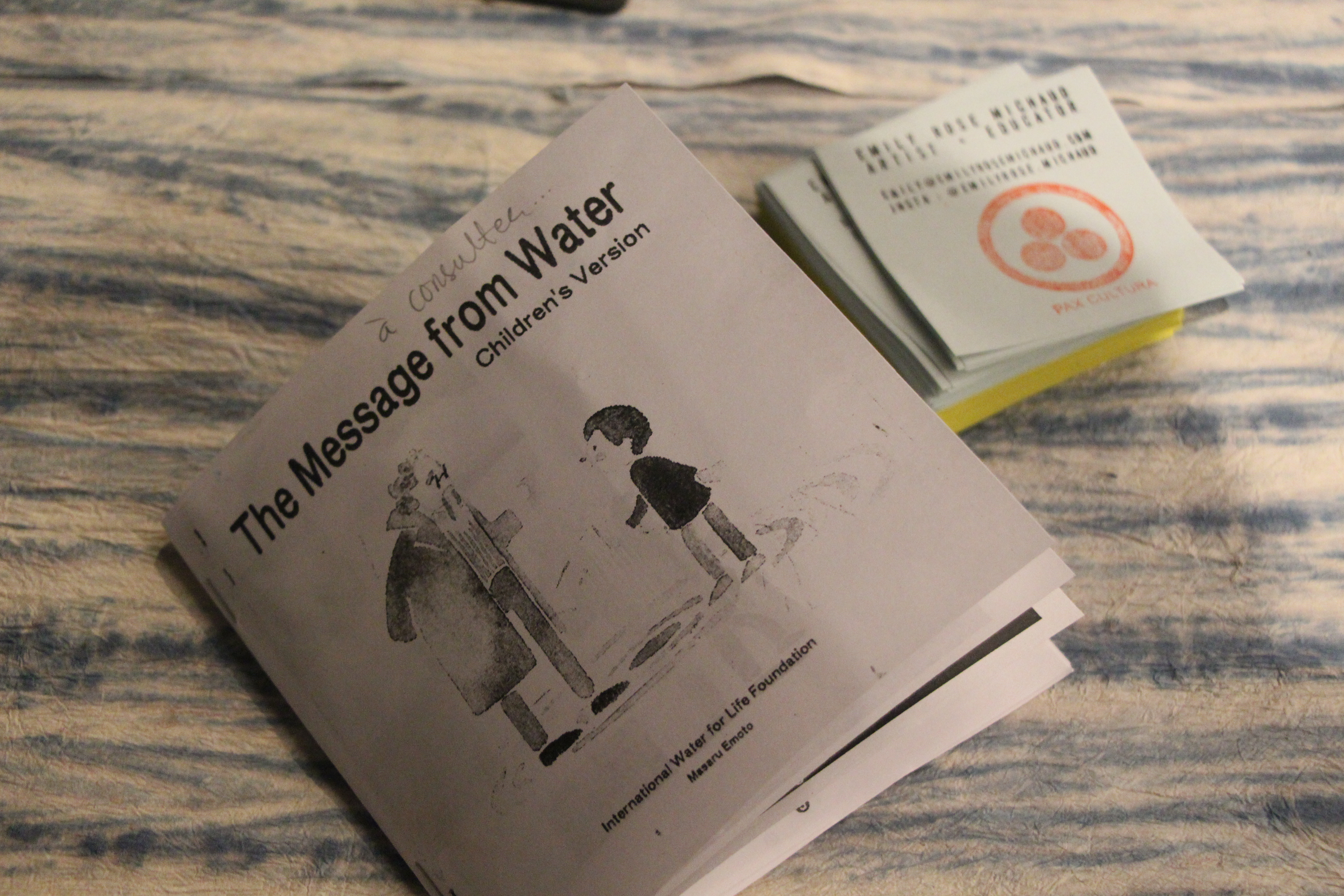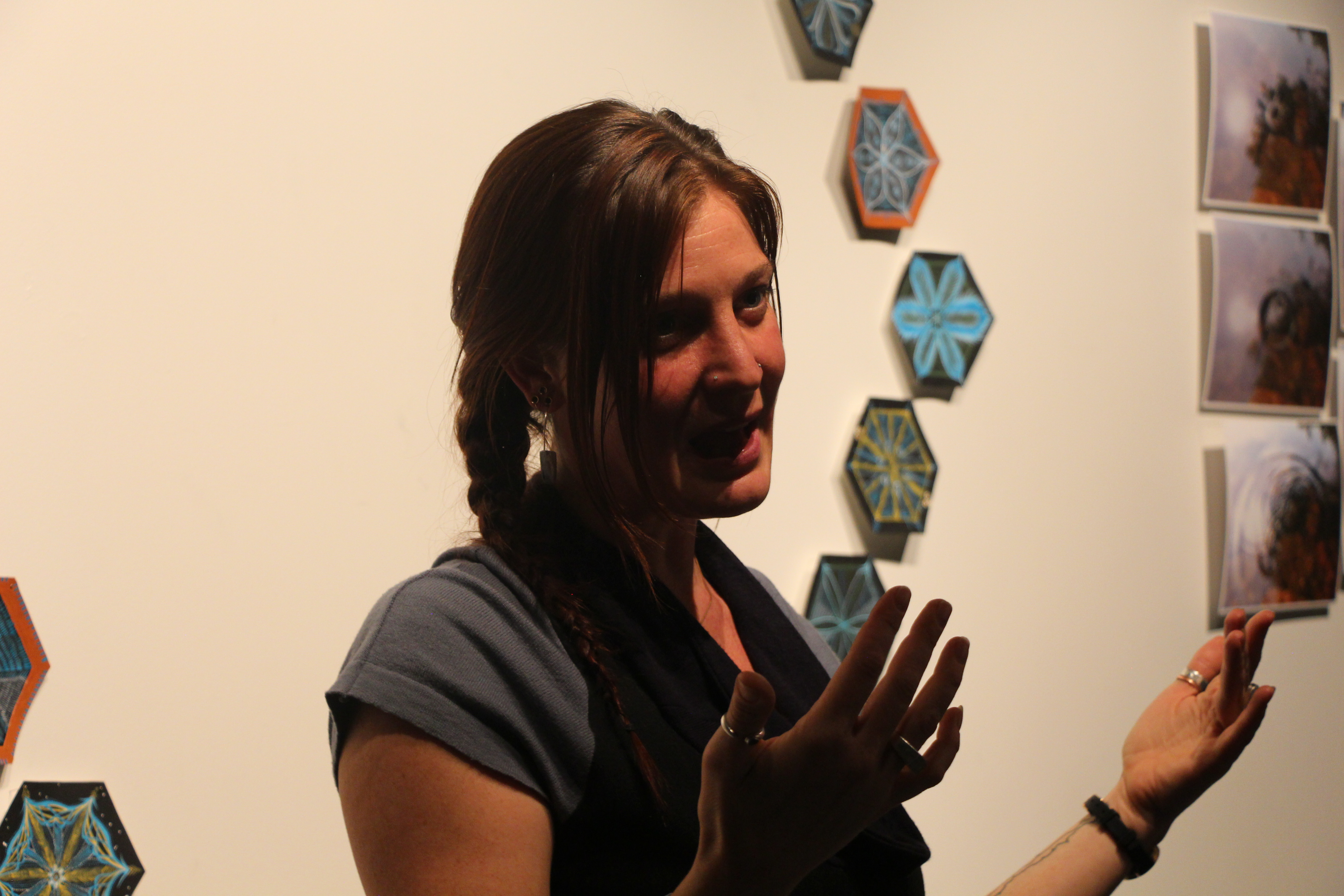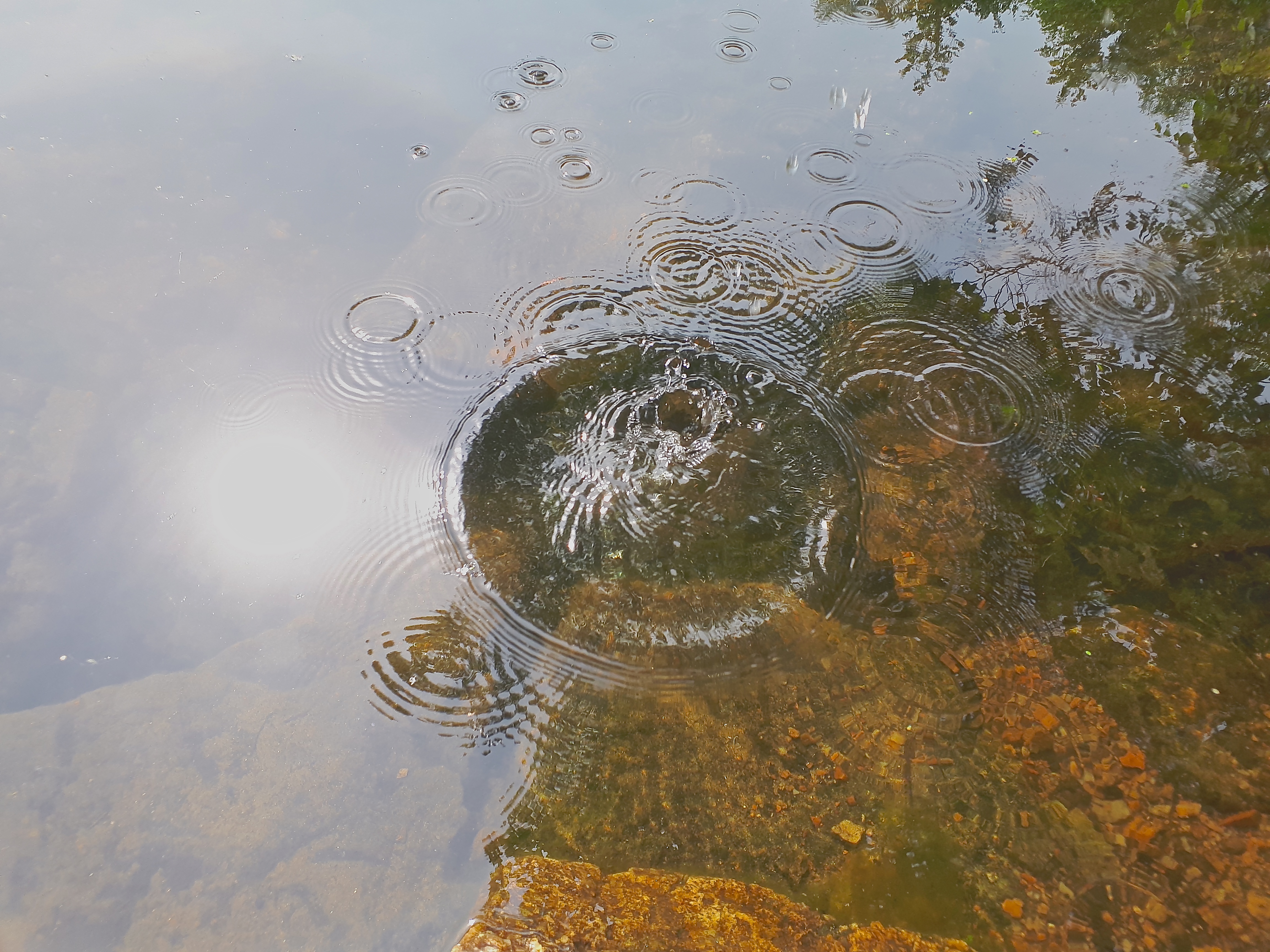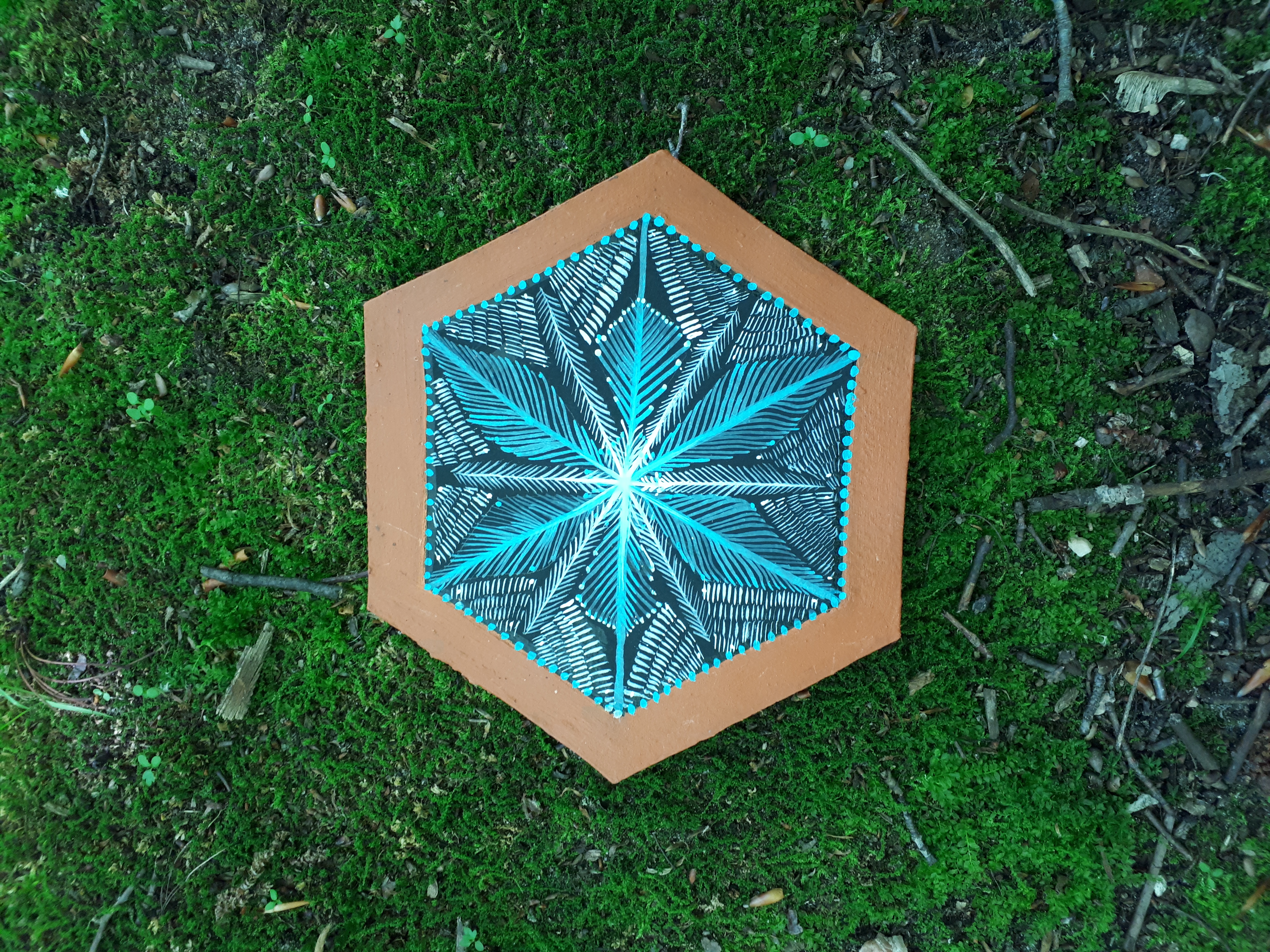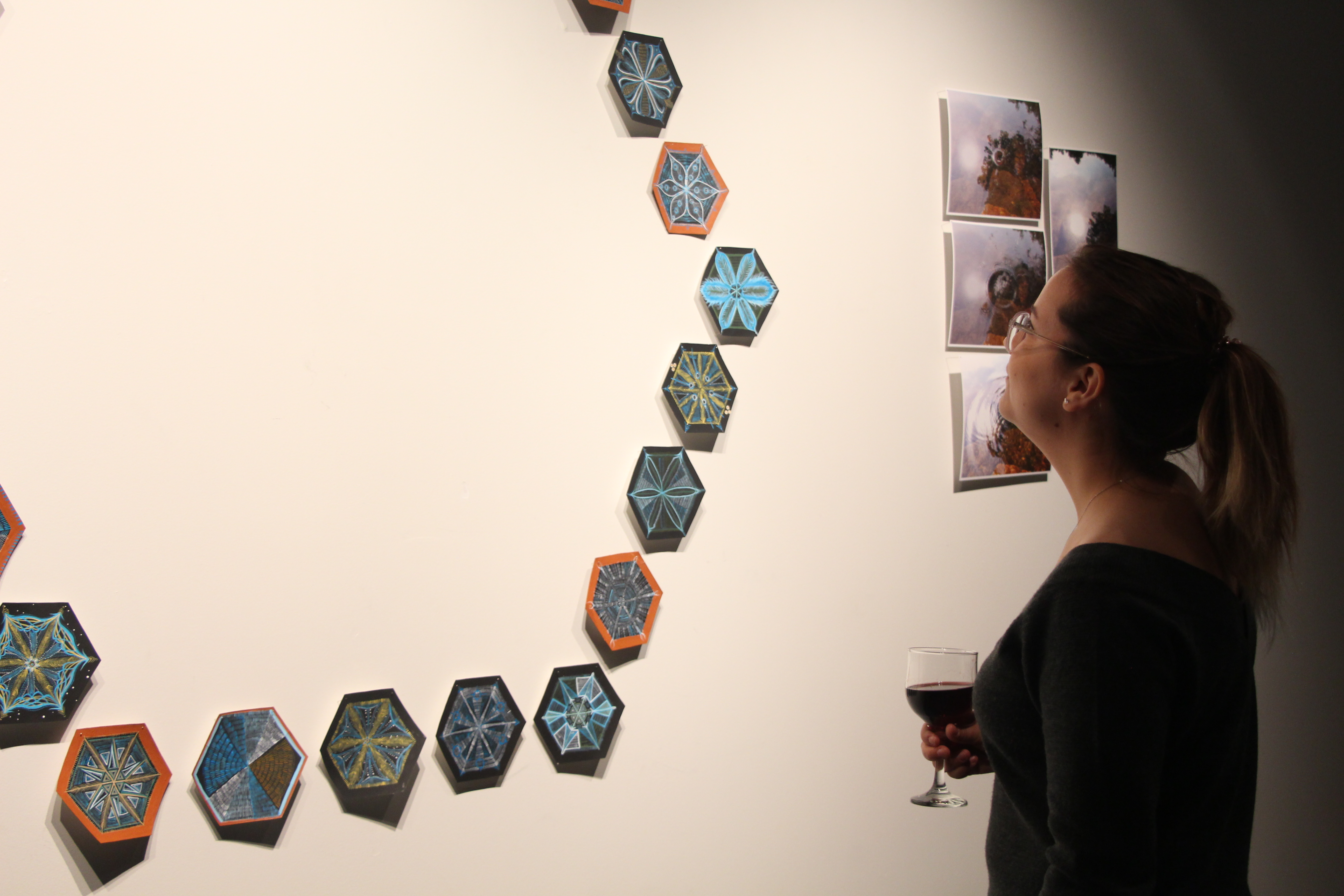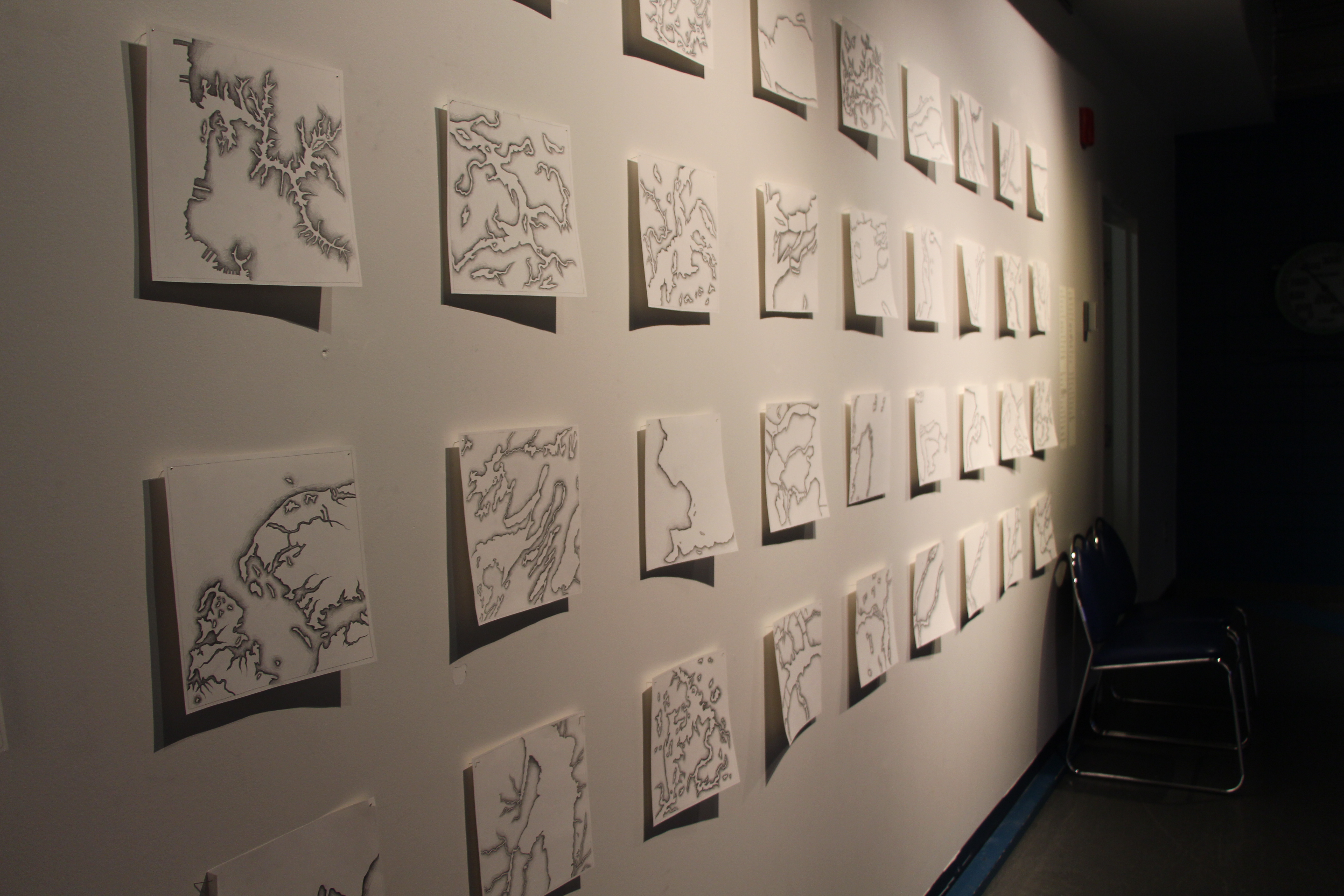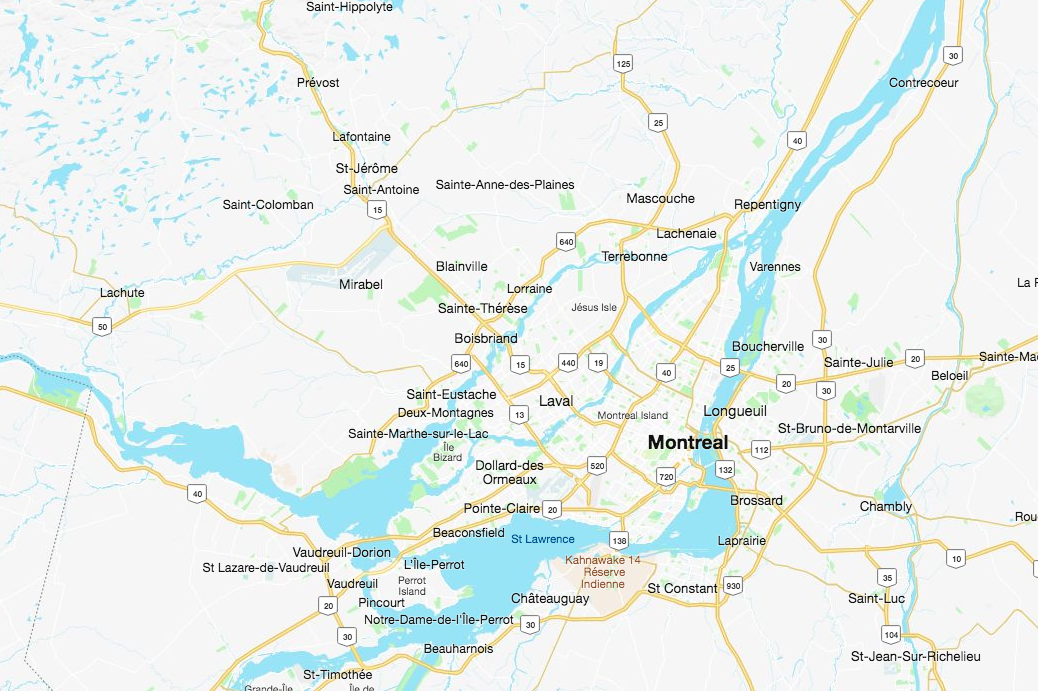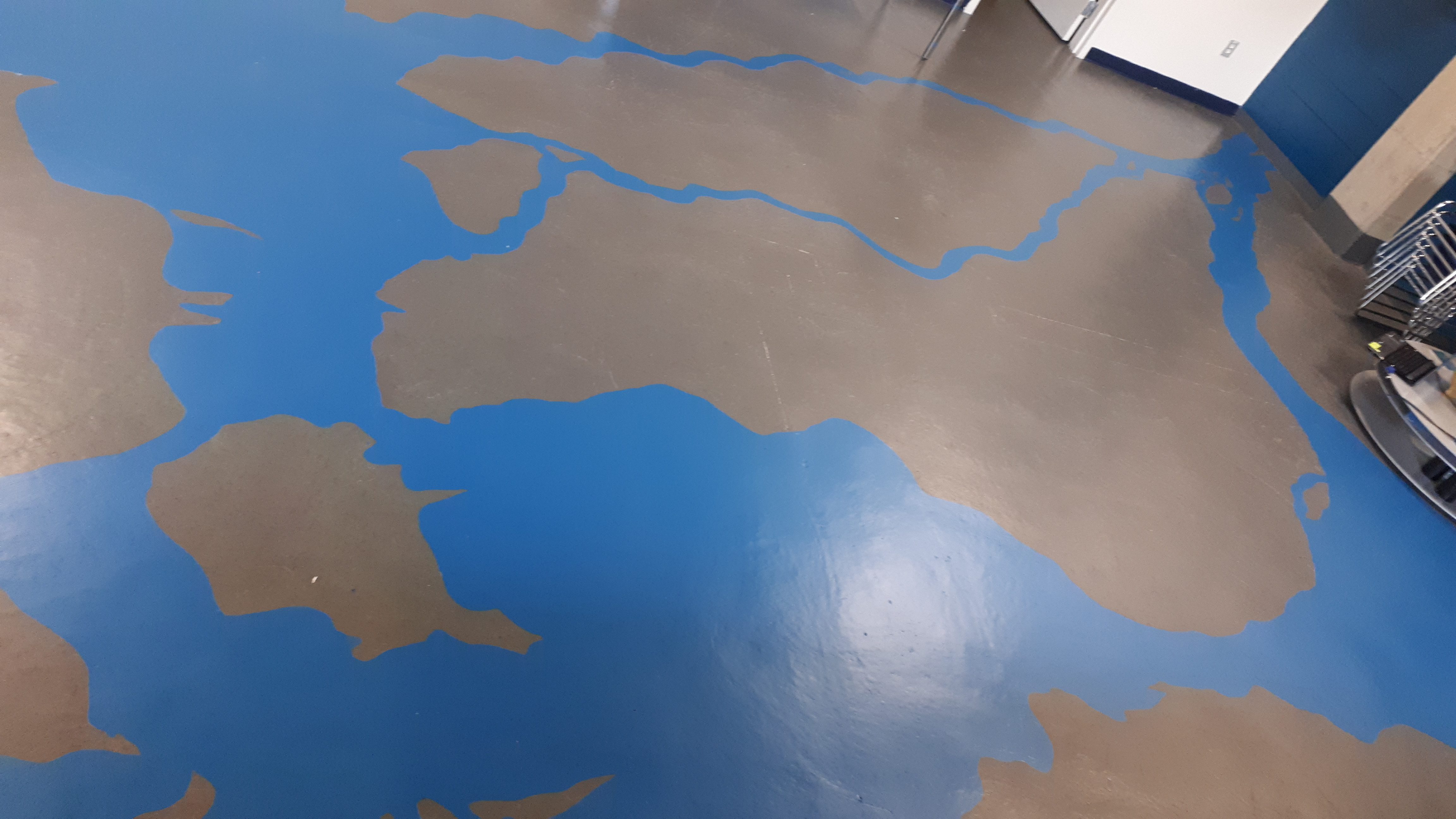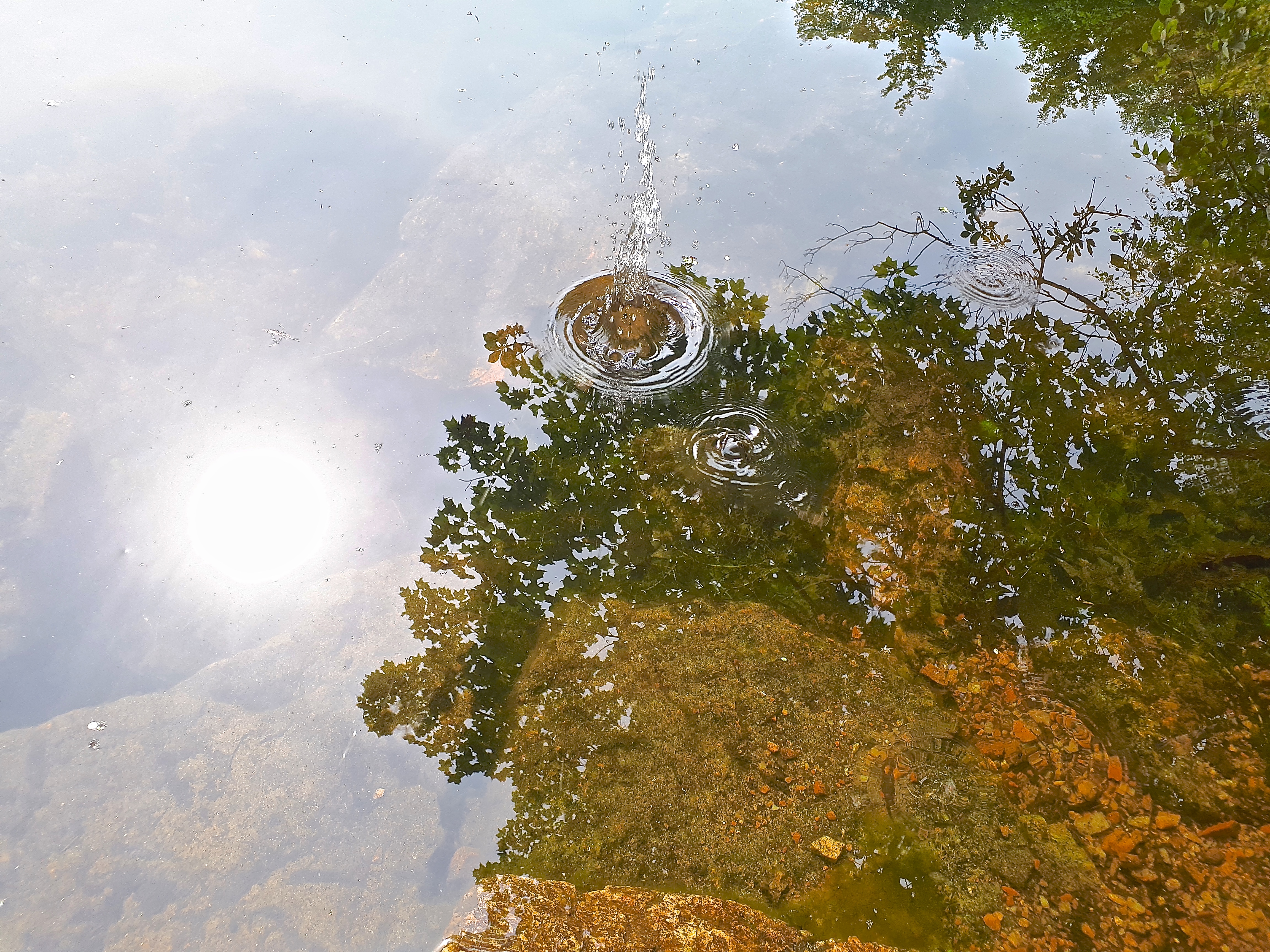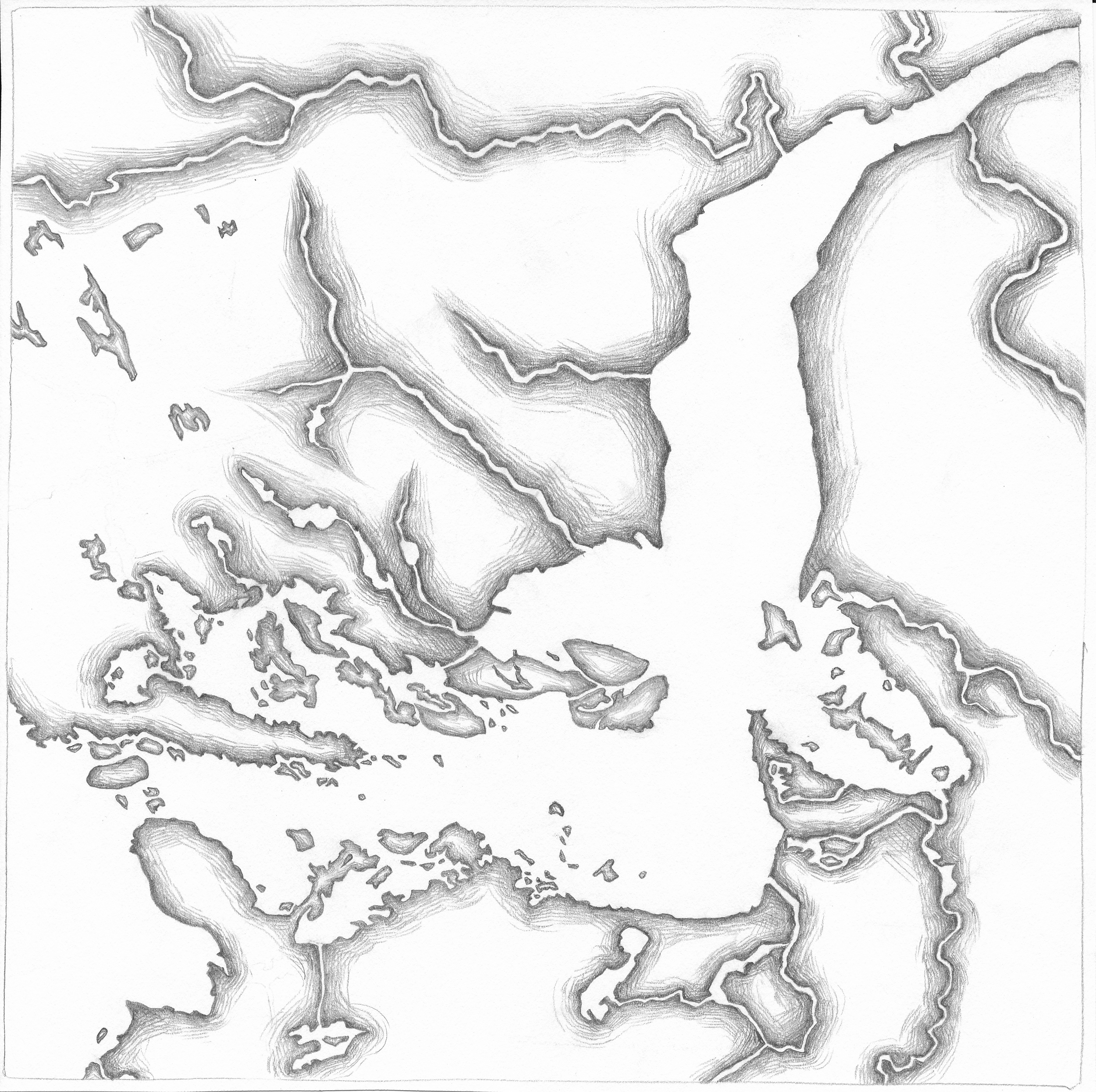Drawing, sound and painting installation, C.I.EAU (Water Museum), Laval, Montreal, Canada, 2019.
Longing: Reflections on Water was part of a multi-year series of interdisciplinary works exploring our human relationship to water, memory, emotions, and mapping. This multidisciplinary drawing exhibit explored the physical, emotional and spiritual roles of water in our lives and featured two series of drawings that had been in gestation since February 2019. A soundscape accompanying the exhibit consisted of layered sounds and music from public archives; field recordings of water; vocal harmonies; social and political speech; and music from Esmerine.
The first series of graphite drawings is a portrait of the Spring flood of 2019, and features hydrological maps of some of the many communities along the Outaouais and St. Lawrence Rivers affected by water’s power. The second series, made in colourful acrylic inks, highlights the process of intentional mark-making, as well as thought and time with the water. It is inspired by the molecular structure of water. The exhibition is at once a personalized homage to the watershed that sustains us as well as a forum to raise the question: can human consciousness affect the molecular structure of water? From the microscopic, to the regional, all the way to the global.
The exhibit took place at the Centre d’Interprètation de l’eau, Montréal (Laval), QC, from October 17, 2019 – January 18, 2020.
Personal motivation:
All of these works come from an urgency I feel to acknowledge water’s essential nature, the need to connect and spend time with the waters. I am continually motivated to make work that connects us to the places in which we find ourselves, and to build deeper and more meaningful relationships with the natural world. Like a drop of water, we have impact within our collective. We can’t afford to be on standby as the war wages on in our own back yards, each day. This difference we make can emerge in our very embodiment of values that are learned directly through relationship building, meaningful conversations, visits with the water. The difference we can make is carried in the remembrance within our own bone lineage. Fighting to keep the holy, living world intact in a world that too often forgets to remember.
At the time of the flood in Outaouais last Spring, I would walk to the mighty Kitchissippi daily to observe the water levels and to witness the effect that the water’s power had on the local Ottawa/Gatineau commuters. I was fascinated by people’s responses to the daily scene – some were oblivious and continued their routine shuffle without a glance while others stood on the bridge with their mouths open wide. The season was emotionally raw, beautiful and destructive. I found it somehow victorious to see the water take back shoreline without remorse. I saw it as an opportunity for many in the region to truly grasp the concept of water as living force, so much more than resource or liability. The water seemed to carry emotion and life itself – sadness, joy, weight, beauty. Last Spring was a peak moment for folks in the region to witness this collectively. The strength of the water seemed to speak through my daily actions of drawing the waters and visiting them. It was a creative and sobering time for me. The concrete actions I took countered any fear that was present and helped me to assimilate my emotions and share my research with others to make grief and care for the waters visible in a public forum. Actions of this nature are essential to cure fear and apathy. My hope is that the actions of care and attention accelerate to more collective proportions. When a people’s actions are united, they renew strength, hope, identity, purpose, truth, and love, always through action.
Process and research:
Graphite drawings – This series began at the end in February 2019, almost one month before the Spring flood in Outaouais, 2019. This was the second one hundred year flood in two years affecting the region. The drawings started on a Winter morning in my kitchen from a desire to spend more time with water. My intention to carve time out for a daily drawing practice allowed me to continue my mapping studies, and explore line, contrast, negative and positive space of where land/water meet. At first these drawings were created as downloads, where I allowed the lines to arrive in a stream of consciousness way. As the Spring melt developed, they quickly developed into specific studies of various shorelines throughout the region, that I would visit or learn about. Some maps were drawn on a road trip to the North Eastern States, where I noticed the waters were also high, and the rest of the maps were depictions of specific communities along the Outaouais and Saint Lawrence Rivers affected by the flood.
I live in the Hull district of Gatineau in Algonquin territory, about a 15-minute walk from the mighty Kitchissippi/Outaouais River. The daily visits I made to the water complimented my drawing process by deepening my relationship to both subject and place. I returned regularly to the Chaudière Bridge to spend time with the Akikodjiwan Falls and Islands. This area is known more commonly by the colonial names of Chaudière Falls and Chaudière, Albert, and Victoria Islands. I continued these visits and drawings each day until June, just past the peak of the Spring flood.
Hexagon paintings – My water drawings continued into the Summer in the form of new works, which were inspired by the molecular structure of water. The hexagons came into being at outdoor locations by various bodies of water, throughout the Outaouais region and by Lake Huron in Anishinabek territory. The drawings were made throughout my monthly Nomadic residencies with my project Ensemble Nomade in the Outaouais (@ensemble.nomad.e), as well as on Manitoulin Island, where I spent three weeks at a course for licensed teachers in M’Chigeeng First Nation, on the shores of the Lake Huron’s North channel.
My research for this series began with a book that a friend introduced me to as she knew I worked with youth and water. ‘The Message from Water – children’s version’, was written by author Masaru Emoto, researcher and founder of the International Water for Life Foundation who also published several photographic collections of water crystals found in frozen water, taken under a microscope. The crystals each have six sides and are different and unique. The picture book shows water crystals from around the world, each one having different features depending on the conditions in which it is found. The photographs throughout the book go on to show how the crystals change depending on words spoken or shown to them, as well as images and music. The same experiment was done several times with similar results. The crystals exposed to positive qualities such as love and thanks are notably more beautiful and symmetrical than the ones exposed to negative qualities such as hate or insults. The paintings were reflections on this phenomenon, and the series continues to grow to this day.
